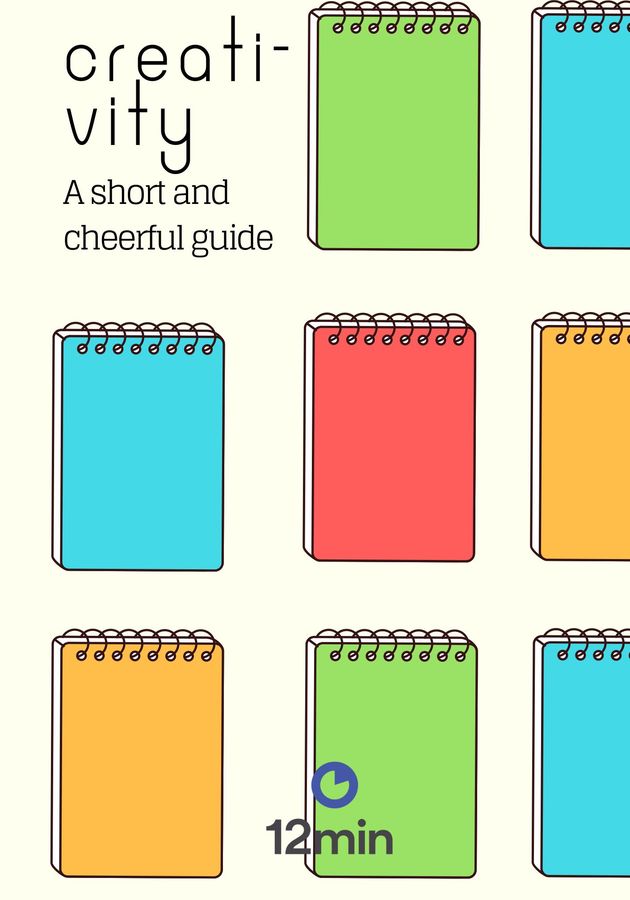Becoming rich doesn’t need to be complicated or onerous: you can achieve this objective merely by tearing down a few barriers that keep you from managing your money and then putting it in the right places.
That’s, coincidentally, the goal of Ramit Sethi’s “I Will Teach You to Be Rich.” It is, in the words of the author, a book “about taking the first step” and “about using money to design your Rich Life.”
So, get ready to learn how to set up your accounts to “create an automatic financial infrastructure that will run smoothly with minimal intervention,” and prepare to achieve this in no more than six weeks!
Why is managing money so hard?
Only a few of the reasons people have for not managing their money are actually valid. Most are some “poorly veiled excuses for laziness or not having spent ten minutes on research.” Here are the most common:
- Info glut. When it comes to weight loss, there are only two things you need to know: eat less and exercise more. However, “instead of accepting these simple truths and acting on them, we discuss trans fats, obscure supplements, and Whole30 versus paleo.” Well, it’s the same with money: we tend to digest so much information about saving and spending that we end paralyzed to actually do something. “Let the fools debate the details,” advises Sethi. “Just as you don’t have to be a certified nutritionist to lose weight or an automotive engineer to drive a car, you don’t have to know everything about personal finance to be rich.” What you do have to know – is how to cut through all the information and get started.
- The media. Stop visiting financial sites: their job is to trick you into reading more articles via clickbait titles and images. And even if they actually offered good content, don’t forget that you’re not studying to become a financial expert, but learning how to make your money grow automatically.
- Victim culture. Some decades ago, Monty Python’s Four Yorkshiremen was a sketch, but it seems to be the reality nowadays: people actually compete with each other to see who’s the bigger victim. This, of course, is stupid. If you want to become rich, stop being a cynic and start saving. Even $100 a month is a start, isn’t it?
- The education system. No, it’s not true that our schools don’t prepare us for a decent financial future: most colleges offer many classes in personal financial training.
- Credit card companies and banks. True, they are after your money, but that’s the point of their existence. So, stop complaining and learn how to beat them. They won’t change. But you can.
Some key things to know before you get started
“Great things are not done by impulse,” wrote Vincent Van Gogh more than a century ago, “but by a series of small things brought together.” Sethi is a firm believer in small things and small steps. To him, it is much more important to know enough to get started than to spend an exhaustive amount of time researching the best fund in the universe and get stuck while doing that. In order to prepare psychologically for his 6-week program to wealth, keep the following bits of advice in mind:
- The 85 percent solution. Designing the perfect money management plan takes a lot of time – and time is not a luxury that you have when it comes to money. The 85% solution says that it’s better to start with a flawed plan and get some of it right for some time than do nothing during the said period. Think about it: 85% of the way is far better than zero percent. Your money system just needs to be good enough. Once it is, you’ll be able to get on with your life and be free to do the things you really want to do.
- It’s okay to make mistakes. “It’s better to make them now, with a little bit of money, so that when you have more, you’ll know what to avoid.”
- Spend extravagantly on the things you love and cut costs mercilessly on the things you don’t. Getting rich is not about saving as much as it is about conscious spending. And conscious spending is all about prioritizing! You have one life, so ignore all the advice that tells you to stop buying lattes. On the contrary: keep buying them, because life is made of those little pleasures. Save on what you don’t care about very much. For example, if you want to travel, camp, or bike a lot – move inside a smaller apartment. After all, you won’t be spending too much time there anyway.
- There’s a difference between being sexy and being rich. If you want to be sexy, buy, sell and short stocks all the time. If you want to be rich, accept financial boredom, and once you buy a few good funds, automate the process and do nothing while your money multiplies. Buy-and-hold investing wins over the long term – every time.
- Don’t live in the spreadsheet. It’s not necessary to run different scenarios in Excel all the time, obsessing over every tiny change in your spending. Just pick your financial system and move on with your life – which, of course, only takes place outside the spreadsheets. The keyword: automatizing.
- Play offense, not defense. Most of us play defense with our finances, waiting until the end of the month to look at our spending and make proper adjustments. However, getting rich is all about going on offense – with your credit cards, your banks, your investments, and even your own money psychology. So, get aggressive! If you don’t do it, no one’s going to do it for you.
Ramit Sethi’s 6-week program to the rich life
Most money-related advice is complicated. If you didn’t realize by now, Sethi believes only in simple instructions. Arguably, the fundamental one that he wants to share with you: if you want to live a rich life – which is somewhat different from being rich – you don’t need to do anything more than to figure out where your money is going and redirect it to where you want it to go. The good news is that you can achieve this via a fairly comprehensive 6-week program.
Week 1: optimize your credit cards
The first step toward getting rich is setting up your credit cards properly. It’s quite simple to do this.
- Get your credit score and credit report. It will take you no more than an hour to get your free credit score at myfico.com and your free credit report at annualcreditreport.com. Both numbers are important: a bad credit score amounts to extra interests.
- Set up your credit card. In the next two hours, either make sure you have a no-fee card or get a new one after checking the best one for you at bankrate.com.
- Make sure you’re handling your credit cards effectively. First, set up automatic payments so your credit card bill is paid off in full every month. If you are in debt, set up an automatic payment only for the largest amount that you can afford. Next, get your fees waived. If you are debt-free, apply for more credit.
- If you have debt, start paying it off. If you are in debt, start paying it off today automatically. Quickly getting out of it will be the best financial decision you will ever make.
Week 2: beat the banks
Now that you’ve set up your credit cards, it’s time to set up the right bank accounts. It is easy as 1-2-3:
- Open a checking account or assess the one you already have. Just as in the case of credit cards, if you already have a bank account, make absolutely sure it is a no-fee, no-minimum account by calling your bank and saying something along these lines: “I’d like to confirm that my bank account has no fees and no minimums whatsoever. Can you confirm that?” If you discover something you don’t like, threaten your bank you’ll quit if they don’t get you a new card per your requirements. They will.
- Open an online high-interest savings account. It’s psychologically much more powerful to have your savings account separate from your checking. So, compare banks at bankrate.com and start earning high interest. Optionally – if you want to get a bit more advanced – you can also open an online checking account. There are fewer tricky fees there by default.
- Fund your online savings account. Leave one and a half months of living expenses in your checking account. Transfer the rest to your savings account – even if it’s only $100.
Week 3: get ready to invest
Now, it’s time to open a 401(k) and an investment account – even if you have just those $100 to start. Once again, the process boils down to merely a few steps:
- Open your 401(k). Call your HR manager, get the necessary paperwork, and fill it out. It’s that easy. If your employer offers a match, contribute enough to get the full match. If not, just open your 401(k) account and contribute nothing. It’s good for a start.
- Come up with a plan to pay off your debt. You can get rid of your credit card debt in five steps:
i. Figure out how much debt you have. Just create an Excel spreadsheet with four columns (credit card, total amount of debt, annual percentage rate, and minimum monthly payment) and fill it out.
ii. Decide what to pay off most. Use either the standard method (paying minimums on all cards and more money on the card with the highest ARP) or Dave Ramsey’s snowball method (pay minimums and more on the card with the lowest balance).
iii. Negotiate down the ARP. Just call your card company and be aggressive.
iv. Decide where the money to pay off your credit cards will come from. Balance transfers.
v. Get started.
- Open a Roth IRA (individual retirement account) and set up automatic payments. Send as much as you can: Sethi says that even $50/month is fine.
- Find out if you’re eligible for an HSA (health savings account) and, if you are, open your account.
Week 4: conscious spending
Near the end of the first month in your journey toward a rich life, it’s time to figure out how much you’re spending – in order to work out how to make your money go where you want it to go. Translated into practical terms, the process looks like this:
- Get your paycheck and make a Conscious Spending Plan. Don’t overthink this. Just break your take-home income into four chunks: fixed costs (50–60%), long-term investments (10%), savings goals (5–10%), and guilt-free spending money (20–35%).
- Optimize your spending. You probably spend too much money on subscriptions. Change that via the “À La Carte Method”: first, cancel all subscriptions and then start buying them only when you need them. After one month, compare the costs. Then repeat the process cut the expenses down even further.
- Pick your big wins. Big wins are the expenses that make you say – “Yeah, I probably spend too much on this or that.” Eating out, clothes, and travel are some common big wins. To optimize your spending in these categories, use the envelope method: just put money beforehand in separate envelopes (one for each big win) and don’t allow yourself to pass the limits. You can transfer money between envelopes, but when the envelopes are empty, that’s it for the month.
- Maintain your Conscious Spending Plan. It’s a marathon, not a sprint. You’re in it for the long run.
Week 5: save while sleeping
Now, it’s time to automate your new infrastructure to make your accounts play together nicely. These are the three simple action steps:
- List all your accounts in one place.
- Link your accounts together.
- Set up your Automatic Money Flow.
Do this, and you will have set up a system that should “automatically send money to your investment accounts, your savings account, and your fixed costs, and leave you money for guilt-free spending.” And what more do you need?
Week 6: investing isn’t only for the rich people
Contrary to popular belief – ironically, widespread mostly among the poor – investing is not the same as picking stocks. You can get the most out of the market with very little work.
The trick is not even a trick: you just need to research what you buy, then buy it, and then, finally, hold to it. That’s it: now you’re an investor. And a rich one, mind you!
Final Notes
No-nonsense and easy-to-read, “I Will Teach You to Be Rich” has been lauded by numerous publications as “the manual that taught the Insta generation “how to earn more, save more, and live a rich life.”
“Smart, bold, and practical,” Ramit Sethi’s 2009 book is indeed extremely appealing and highly recommendable – and, in a way, it is already a classic.
12min Tip
Instead of debating the minutiae of your money management plan, just start saving. You’ll adjust later.





























